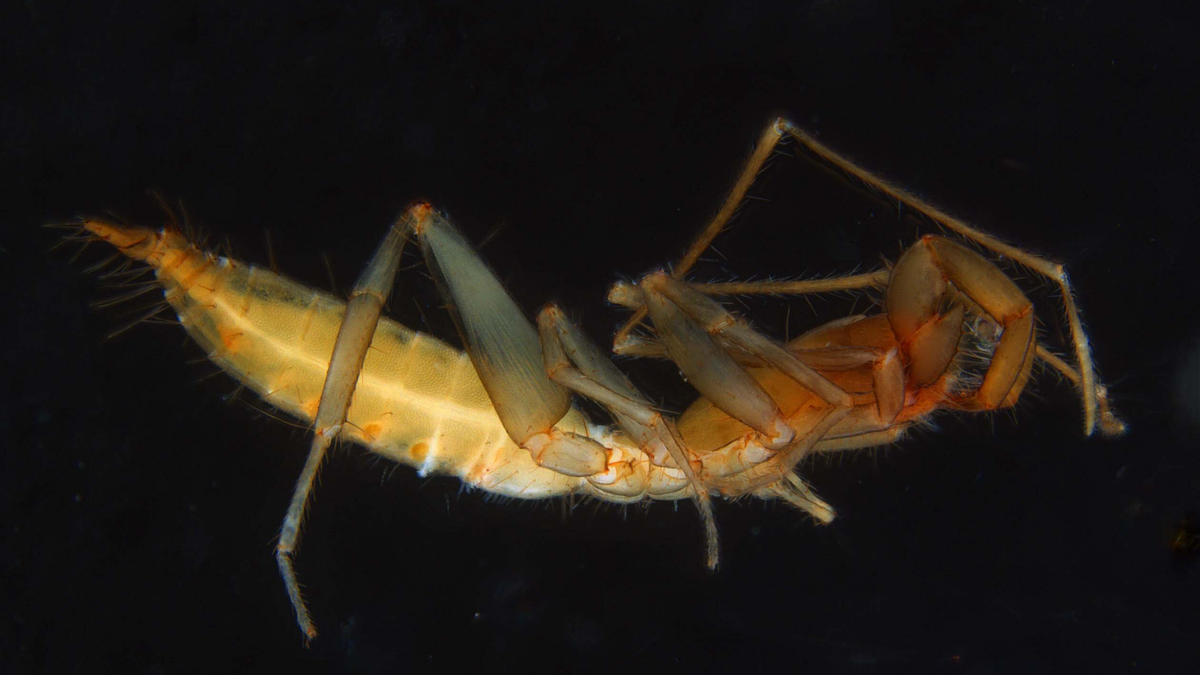
A subterranean schizomid is pictured. (University of Western Australia)
Once upon a time, Western Australia was covered in forests and those forests were filled with sightless, eyeless, tip-tapping critters called schizomids. But over the course of the last 66 million years, the region grew much hotter and drier as the whole continent shifted north toward the equator. Those forests slowly died, and the creatures within them had to find new homes. So they fled underground in many waves, evolving to survive in their radically changed environments.
That's the story told in a new paper based on a genetic study of those strange arachnids. The critters, very distant cousins of spiders and scorpions, are found all over the world. But only in Western Australia's Pilbara region do they turn up underground. The researchers describe 56 newfound species in their study, an incredibly diverse group for such a small area.
"We think there are likely to be a lot more species out there, because they have such small distributions ... and we've only been able to sample a few places," lead researcher Kym Abrams, a biologist at The University of Western Australia, said in a statement. [Goliath Birdeater: Images of a Colossal Spider]
Usually, when researchers run across previously unknown subterranean schizomids, she said, it's during an environmental survey of the sort typically conducted before major construction projects.
More From LiveScience
That diversity of these species, Abrams and her team wrote in the paper, likely resulted from how splintered the species became as the region dried out. Eyeless schizomids are blind, and so they use their long forelegs to tap around their environments, almost like someone using a cane. And individual species all over the world tend to occupy relatively small areas.
But as Australia's dried-out west forced these Pilbara critters underground, the arachnids appear to have become even more isolated from one another, separated by long stretches of cooked land. And once isolated, each cluster of schizomids was free to evolve along its own path, a bit like if they'd each been dropped on different Pacific islands.
Biologists had long wondered, the team wrote, whether Australian subterranean schizomids had all descended from a single species that traveled below the surface all at once, or whether the creatures dropped into the dirty depths in waves. This research, the scientists wrote, suggests that even though all 56 species behave similarly — all but one type live their entire lives underground, never emerging to the surface where their ancestors lived — they're descended from different waves of subterranean pioneers.
Once underground, the descendants of those pioneers got further separated from one another, evolving separately into an even wider variety of species.
This research was published online as part of the upcoming October issue of the journal Molecular Phylogenetics and Evolution.
Originally published on Live Science.
